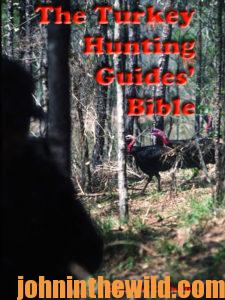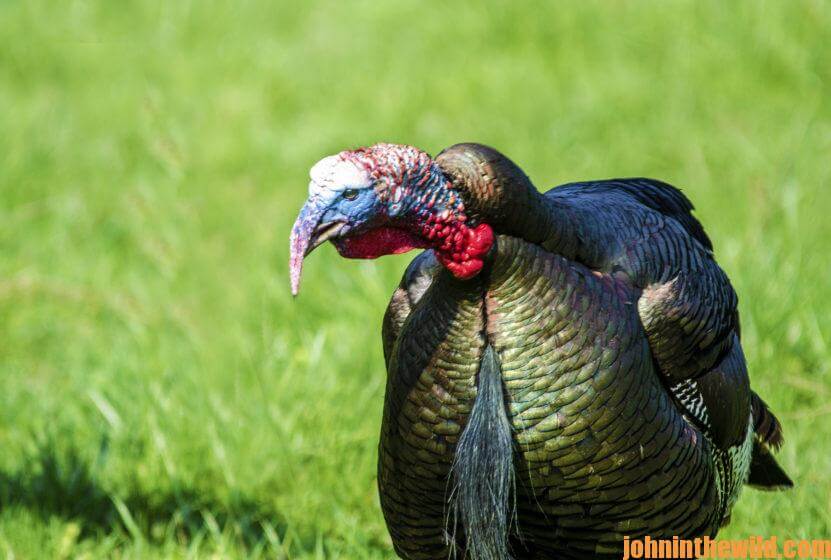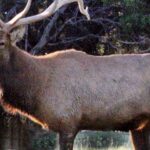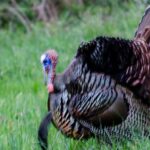Editor’s Note: With turkey-hunting season still occurring in parts of the nation and for those who’ve finished their spring turkey seasons but are examining what happened during their seasons, we’re covering some ideas this week for hunting late-season hard-to-take turkeys and learning about missing a tough-to-take tom sometimes. We all hate to admit that happens, but it does. Turkey hunting for me is about building memories, and the tougher the gobbler is to take, the stronger the memory I’ll have after I finally harvest him. Also, by taking a legendary bird, I may open-up that same area of the woods to a large group of turkeys that will gobble next season, since the boss gobbler will be gone.
 There are two very-efficient ways to hunt bad gobblers. The first is the least-expensive but may take the longest to learn – hunt WMAs.
There are two very-efficient ways to hunt bad gobblers. The first is the least-expensive but may take the longest to learn – hunt WMAs.
Hunt WMAs:
Wait until the end of the season, and hunt turkeys on heavily-pressured wildlife management areas (WMAs). The turkeys there have to be the smartest gobblers in the wild because they’ve survived heavy hunting pressure and have been able to live long enough to breed enough hens to produce a new generation of turkeys each year. These gobblers probably have heard every turkey call made by each call manufacturer, and they’ve outwitted some of the best turkey hunters every year. These birds have learned that when hunting pressure builds-up, the only way they can survive is by moving into thick cover, where the likelihood of getting caught and eaten by a predator is far less than the likelihood of being shot by a turkey hunter.
 While interviewing a forester one time on a heavily-hunted WMA, I asked him where turkeys go at the end of turkey season. He explained their movement into thick cover. “I’m in the woods almost all day, every day, and many times when I’m moving through one section of the WMA to get to another part of the property, the shortest distance for me to travel takes me through thick cover. I’ll jump numbers of gobblers in that thick cover where no turkey hunter in his right mind will hunt.”
While interviewing a forester one time on a heavily-hunted WMA, I asked him where turkeys go at the end of turkey season. He explained their movement into thick cover. “I’m in the woods almost all day, every day, and many times when I’m moving through one section of the WMA to get to another part of the property, the shortest distance for me to travel takes me through thick cover. I’ll jump numbers of gobblers in that thick cover where no turkey hunter in his right mind will hunt.”
To take a turkey in thick cover on a WMA, you’ll need to find an opening and set-up your stand 10-20 yards away. You must call very little, wait a long time and not expect to hear the turkey gobble as he comes in to you. If you’re lucky, you may hear one of those seasoned longbeards drumming before he enters the opening. You’ll need to have your shotgun on your knee and your cheek against the stock, and be ready to squeeze the trigger as soon as the tom sticks his head out in that opening.
Pine plantations that are 2-5 years old are productive places to take late-season gobblers on WMAs. Steep hollows that no one wants to climb into or especially climb back out of are other ideal spots on WMAs to pinpoint turkeys with long spurs and long beards. Also, little necks of woods with thick cover around them and a creek bottom running through them may be a hidden sanctuary that most hunters will believe is too small for a tom to stay there. Oftentimes, a strip of woods that’s fairly close to a major road will have cars driving by every day, creating deafening traffic. You have to remember that turkeys have likely never seen a hunter in a place like this, and they never have heard a hunter call from a spot like this. So, search for these kinds of sanctuaries.
If your ego will allow you to be defeated more times than you’re successful, you can hunt and take these bad birds on public lands. However, you generally won’t have an easy hunt. One of the advantages of hunting public lands is that by the last week of the season, most novice turkey hunters have given up on their hunts. Most of the successful turkey hunters have tagged their birds, so they can’t hunt legally.
At the end of the season, most gobblers that have survived are looking for that last hen in the flock that hasn’t been bred. If he can find her, that ole bad gobbler has had a successful season. To locate her, that mature bird knows he has to do a lot more walking and talking than he’s done all year long. He also understands that if a hen answers him, he should wait to see her. This may lead him to move closer to the hunter than he’s ever moved before. Or, if she seems reluctant to come to him, that tom also may move closer to the hunter – spitting and drumming to let the hen know of his presence. If you’ve hunted one of those bad birds for two or possibly three seasons, you should have built-up a wealth of information regarding where the gobbler likes to go and at what times. Therefore, the odds of taking him should be in your favor. If you’re successful, you’ve claimed one of the greatest trophy turkeys you’ll ever take.
Hunt the Guide Beaters at Hunting Lodges:
The next best way to take a bad bird is to schedule a hunt at a turkey-hunting lodge right at the end of the season. During that last week, depending on how much property the lodge has to hunt, and how many guides it employs, usually one-five turkeys will be available that all the guides have hunted for several years but haven’t taken. However, these guides should have the greatest amount of knowledge regarding:
* Where that turkey lives;
* Where that tom travels;
* Why no one has been able to kill him; and
* What plans the guide can come up with to take the bird that’s never been tried previously.
 Bad birds with names always have reputations that are chiseled into the minds of all the guides that have hunted these turkeys and failed. They’re gobblers of legend, and their legends will be talked about and remembered for as long as those guides live and for the years that lodge is in business. The hunter who takes that bird and the tactic he uses will be repeated every time the doors to that lodge open for spring turkey hunting. The men who hunt these bad birds will get a better education in turkey hunting than the hunters who hunt at the beginning of the season and harvest 2-year-old gobblers that almost anyone can take.
Bad birds with names always have reputations that are chiseled into the minds of all the guides that have hunted these turkeys and failed. They’re gobblers of legend, and their legends will be talked about and remembered for as long as those guides live and for the years that lodge is in business. The hunter who takes that bird and the tactic he uses will be repeated every time the doors to that lodge open for spring turkey hunting. The men who hunt these bad birds will get a better education in turkey hunting than the hunters who hunt at the beginning of the season and harvest 2-year-old gobblers that almost anyone can take.
 To learn more about turkey hunting, check out John E. Phillips’s book, “The Turkey Hunting Guides’ Bible,” at https://www.amazon.com/gp/product/B01ITWYY2K/ref=dbs_a_def_rwt_hsch_vapi_taft_p2_i11 and available in Kindle, print and Audible versions. You may have to cut and paste this link into your browser. (When you click on this book, notice on the left where Amazon says you can read 10% of the books for free and hear 10% for free). To learn more about other turkey books by John E. Phillips, go to www.amazon.com/author/johnephillips.
To learn more about turkey hunting, check out John E. Phillips’s book, “The Turkey Hunting Guides’ Bible,” at https://www.amazon.com/gp/product/B01ITWYY2K/ref=dbs_a_def_rwt_hsch_vapi_taft_p2_i11 and available in Kindle, print and Audible versions. You may have to cut and paste this link into your browser. (When you click on this book, notice on the left where Amazon says you can read 10% of the books for free and hear 10% for free). To learn more about other turkey books by John E. Phillips, go to www.amazon.com/author/johnephillips.
Tomorrow: John Phillips Takes the Unlucky Gobbler But Misses the Other Gobbler










